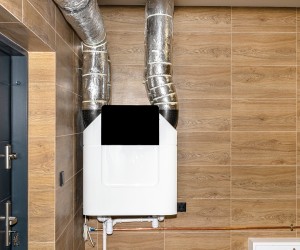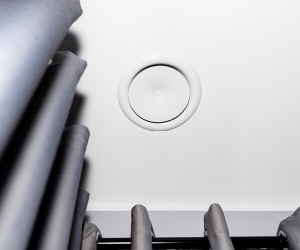Our Customer Service Centre is currently receiving a high volume of calls. Please Report a Repair using the online form.
Understanding MVHR Systems in your home
Let’s get it R.I.T.E. Understanding MVHR Systems in your home
Mechanical Ventilation with Heat Recovery (MVHR) is a whole house ventilation system perfect for today’s modern homes where comfort, energy efficiency and health and well-being are on the agenda.
How does a MVHR system work?
A MVHR system is a whole house system that runs continuously throughout the day.
The system is mounted in a cupboard, in a utility space or sometimes in the loft. It is ducted throughout the property to each room - you will see an air valve in the ceiling (the ducting will be concealed in the ceiling void).
The system extracts and supplies air. It extracts air from the bathrooms, kitchens and utility rooms (known as ‘wet’ rooms) and takes the stale, moisture and odour laden air to the outside. As this air is extracted it passes through a heat exchanger that recovers up to 95%* of the heat in the air.
At the same time as the extraction of air, replacement or supply air is being brought in from outside. It passes through a filter and the heat exchanger where it picks up and re-uses the heat - the air is then supplied to the living rooms and bedrooms. This creates a balanced and continuous level of ventilation into the home.
When outside air temperature increases, the heat recovery mode is switched off and the unit goes in to ‘summer bypass mode’ this is to avoid additional heat being passed into the home, further increasing the internal temperature.

Modern Houses and Airtightness
New homes that are being built are designed to be much more airtight that older houses.
Reducing the amount of drafts and gaps in the house makes it cheaper to heat and more comfortable to live in. However, these newer, more airtight homes require ventilation to allow air to circulate, especially in ‘wet’ rooms (e.g. kitchens or bathrooms).
For this reason, it is very important that if your home is equipped with an MVHR system that you keep it switched on at all times. As mentioned overleaf, the running costs per year are very low, but the MVHR system only works effectively if it is switched on at all times – this is because it runs in ‘passive’ mode, and switches to ‘active’ mode only when it needs to remove damp air.
If you switch it off, it can actually cost more to run over the year, because it has to run more intensively to remove damp and stale air.
Another side effect of not having the MVHR switched on can be mould growth on walls and ceilings – this is because the damp and stale air in the house is not being filtered out of the home.

We are here to help you.
If you have an issue with condensation or mould in your home, please let us know using the online form below.


